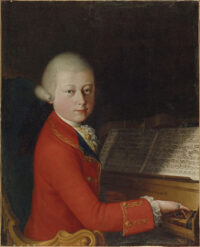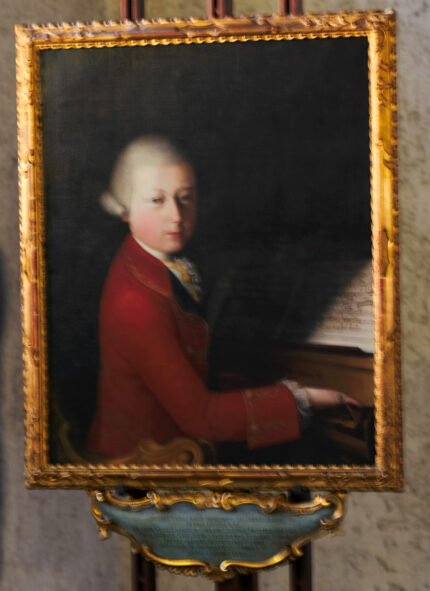 An iconic portrait of the child prodigy Mozart in his red coat and white peruke playing the harpsichord has returned to Verona in clone form: a full-scale replica produced from a ultra-high definition gigapixel image printed in 3D.
An iconic portrait of the child prodigy Mozart in his red coat and white peruke playing the harpsichord has returned to Verona in clone form: a full-scale replica produced from a ultra-high definition gigapixel image printed in 3D.
The painting was made by Verona painter Giambettino Cignaroli in 1770 when Mozart, then just 13 years old, was traveling in Italy. It stayed in Verona, first in the collection of Pietro Lugiati for 18 years, then in the collection of the Philharmonic Academy of Verona until 1856 when it was acquired by a Vienna collector. It wound its way from Austria to France after a 1962 sale to a French collector. His descendants sold it at auction at Christie’s Paris in 2019 for a whopping 4,031,500 euros, four times the pre-sale estimate.
Its current owner, the private collector who shelled out those millions two years ago, allowed the original to go on display in Verona last year at the Sculpture Gallery of the Castelvecchio Museum. Tech company Haltadefinizione took was allowed to use the Gigapixel scanning technology it pioneered to create a version so minutely identical to the original painting that it can be studied by scholars.
The surface of the painting was captured with a robotic system developed by Haltadefinizione together with the technological partner Memooria, able to map the work in all its forms thanks to digital imaging technologies designed for monitoring the paintings. The procedure used made it possible to detect the materiality of the work and return a three-dimensional imprint with precision in the order of ten microns. Thanks to the data obtained, it was possible to implement an innovative 3D printing process, through which the pictorial surface was faithfully duplicated in physical and chromatic terms, giving shape to a real clone identical to the original.
“We are happy to have given our contribution on the occasion of the anniversaries dedicated to Mozart” says Luca Ponzio, founder of the tech company. “Making works of art accessible to the general public, be they physical or digital replicas, is one of our goals and we strive every day to improve and develop new digitization and printing technologies”.
The three-dimensional models represent an important source of information for the research and monitoring of the works, but they can be understood as an innovative way to enjoy art by exploiting the possibility of observing the three-dimensionality of the surface in a virtual model or by creating physical reproductions.
The distinctive gilded frame has also been recreated in meticulously accurate detail by artisan laboratory B. Restauro of Reggio Emilia.
